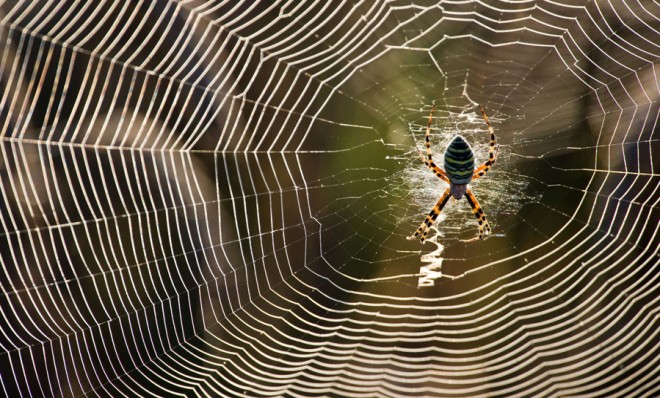How spider webs use electricity to catch prey
As if you needed another reason to be afraid of spiders


Spider webs are notoriously excellent traps, boasting a wide net, incredible tensile strength, and stickiness. Researchers have now found that the webs use another previously unknown means of ensnaring prey: Electricity.
In a new study published in Scientific Reports, a team of California researchers found that webs can actually reach out to snag passing insects in response to their mild electrical charge. The charges trigger a "rapid and substantial web attraction" that is large enough to pluck unsuspecting passersby from their flight.
When bees and other insects fly, they bump into charged airborne particles that leave them with a positive electrical charge. Previous studies had shown that bees can use that electrical imbalance to attract pollen, which often carries a negative charge, without even landing on flowers.
The Week
Escape your echo chamber. Get the facts behind the news, plus analysis from multiple perspectives.

Sign up for The Week's Free Newsletters
From our morning news briefing to a weekly Good News Newsletter, get the best of The Week delivered directly to your inbox.
From our morning news briefing to a weekly Good News Newsletter, get the best of The Week delivered directly to your inbox.
With that in mind, Victor Manuel Ortega-Jimenez and Robert Dudley of the University of California, Berkeley, set out to see if a similar phenomenon could be observed in spider silk.
First, though, they needed some inspiration from a children's toy. Ortega-Jimenez said he noticed that his daughter's toy wand, which gave off an electrical charge, attracted spider webs, and he was curious to know if charged bugs could replicate the phenomenon.
To test that hypothesis, the duo dropped charged and uncharged bees, aphids, and water droplets toward a bunch of common cross-spider webs they had gathered from around campus. Though the silk threads never moved to meet uncharged test subjects, they did reach out 70 percent of the time to reel in the charged bodies.
Here's a slow motion video of that in action:
A free daily email with the biggest news stories of the day – and the best features from TheWeek.com
Though the web movement may sound minor — the threads flexed just one to two millimeters each time — the researchers noted that that is a significant difference in the minute world of insects. The gaps between individual threads in a web can be as little as a couple of millimeters, so the movement would be great enough to catch bugs trying to slip through the cracks.
Jon Terbush is an associate editor at TheWeek.com covering politics, sports, and other things he finds interesting. He has previously written for Talking Points Memo, Raw Story, and Business Insider.
-
 Tariffs: Will Trump’s reversal lower prices?
Tariffs: Will Trump’s reversal lower prices?Feature Retailers may not pass on the savings from tariff reductions to consumers
-
 American antisemitism
American antisemitismFeature The world’s oldest hatred is on the rise in U.S. Why?
-
 Trump: Is he losing control of MAGA?
Trump: Is he losing control of MAGA?Feature We may be seeing the ‘first meaningful right-wing rebellion against autocracy of this era’
